Some breakfast smoothie bowls lean too fruity. Others melt before you get the spoon in. This chocolate peanut butter smoothie bowl doesn’t do either. It delivers that scoopable, creamy texture without needing added sugar or dairy. If you’ve been looking for a chocolate peanut butter smoothie that feels like dessert but eats like breakfast, this one deserves a permanent spot in your rotation.
You’ll learn how to get that soft-serve consistency, how each ingredient helps balance flavor and nutrition, and why this smoothie bowl satisfies both a sweet tooth and a craving for something grounding.
This recipe blends chocolate smoothie, peanut butter smoothie bowl, and protein smoothie into one easy win.
I keep it in my morning lineup because it’s fast, flexible, and always hits the spot.
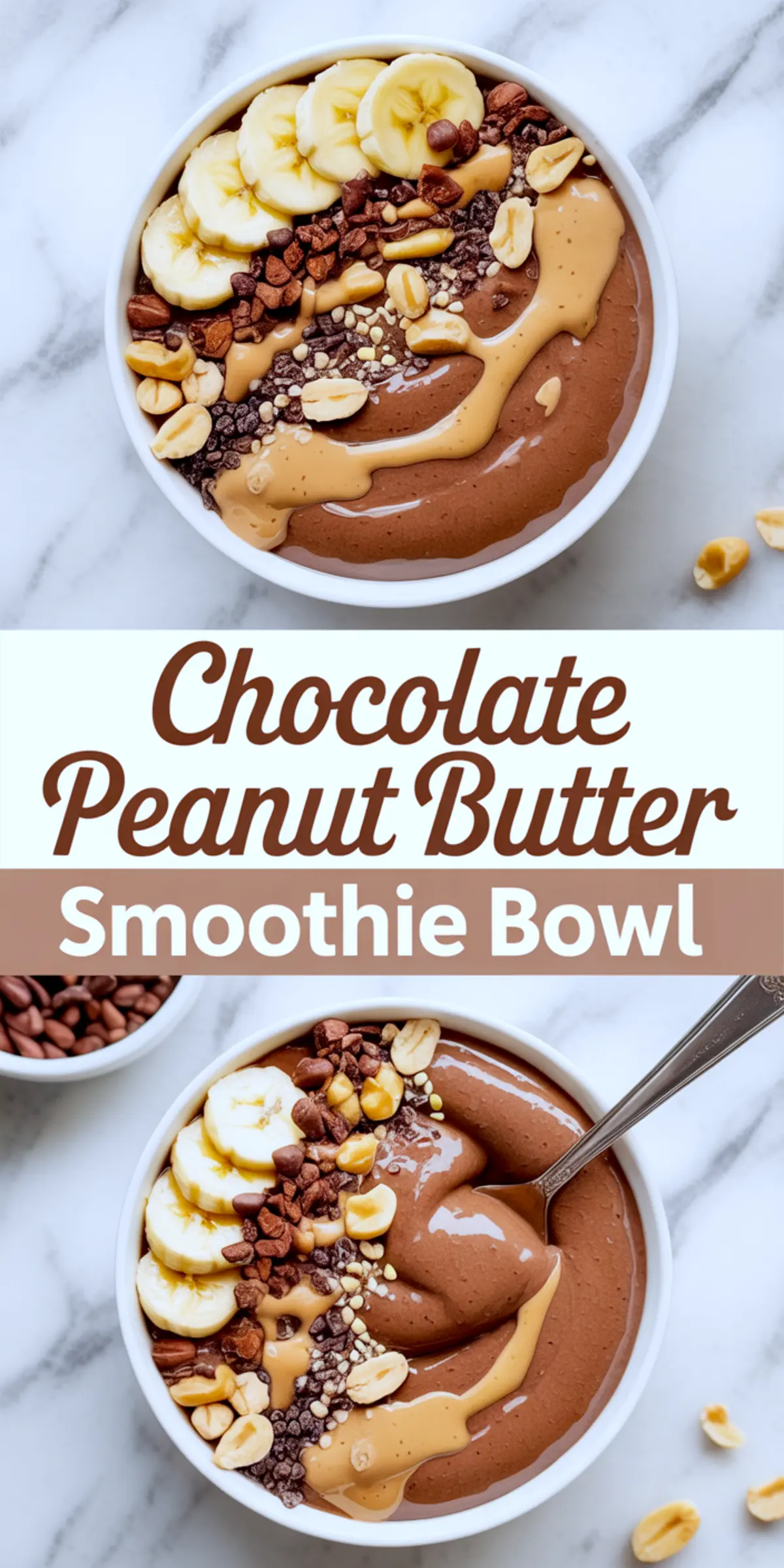
The Frozen Banana Backbone
Frozen bananas give the chocolate peanut butter smoothie bowl its structure. When fully blended, they mimic soft-serve ice cream without needing cream. You get that cold, scoopable base that holds toppings without sinking.

I use ripe bananas sliced and frozen in bags. They add natural sweetness and a silky texture that holds everything together. If they’re not fully frozen, the result turns drinkable, not spoonable.
For those watching sugar, ripe bananas offer sweetness without syrups or dates. It’s one of the most efficient swaps I’ve made in my smoothie bowls.
Cocoa Powder Versus Chocolate Chips
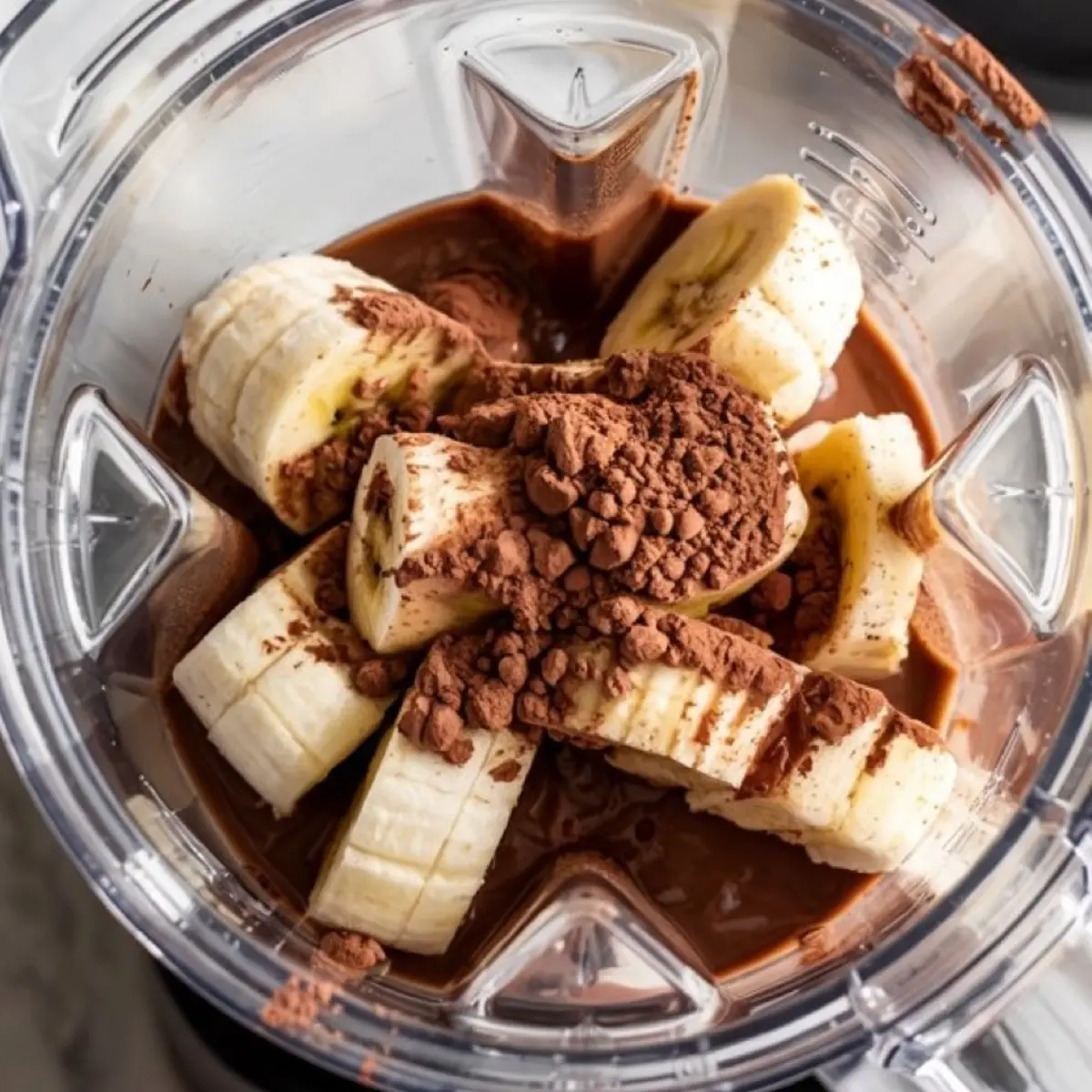
In my notes, I’ve tested both cocoa powder and melted chocolate for the base. Unsweetened cocoa powder wins every time for flavor control. It brings depth without making the bowl too rich.
Melted chocolate tends to overpower the banana and peanut butter. And once it firms up against frozen fruit, it can clump instead of blending smoothly.
If you’re craving a balanced chocolate smoothie bowl that won’t turn heavy, cocoa powder is the better choice.
I add mini chocolate chips on top instead, where they stay crisp and visible.
Try this method with my Chocolate Peanut Butter Cupcakes too.
Choosing the Right Peanut Butter
Peanut butter brings body, salt, and richness to the smoothie. I use natural peanut butter with no added sugar or oil. It blends cleanly and keeps the sweetness grounded.
You can taste the difference between natural and conventional peanut butter once blended. Natural versions keep the texture creamy without leaving a greasy film. If you’re using a brand that separates, stir it well before scooping.
In colder months, I warm the jar slightly in hot water before measuring. It blends faster with frozen bananas that way.
Almond Milk for Balance and Blendability
I use unsweetened almond milk because it adds liquid without distracting from the flavor. It’s neutral, light, and doesn’t compete with the peanut butter or cocoa.
Oat milk works as a substitute if you want a slightly thicker finish. I’ve also tried soy milk, which adds more protein but changes the flavor subtly.
Start with half a cup and adjust as needed based on your blender and the banana’s water content.
If you like nutty drinks, you might also enjoy my Peanut Butter Banana Smoothie.
Optional Protein Boost That Doesn’t Ruin the Texture
Some chocolate peanut butter smoothie bowls turn gummy with added protein powder. I use just one scoop of a clean chocolate blend and reduce the almond milk slightly. That keeps the texture thick and avoids chalkiness.
For a lighter option, you can skip it. The peanut butter already contributes protein and fat, making the bowl satisfying on its own.
How I Build the Bowl for Texture and Contrast
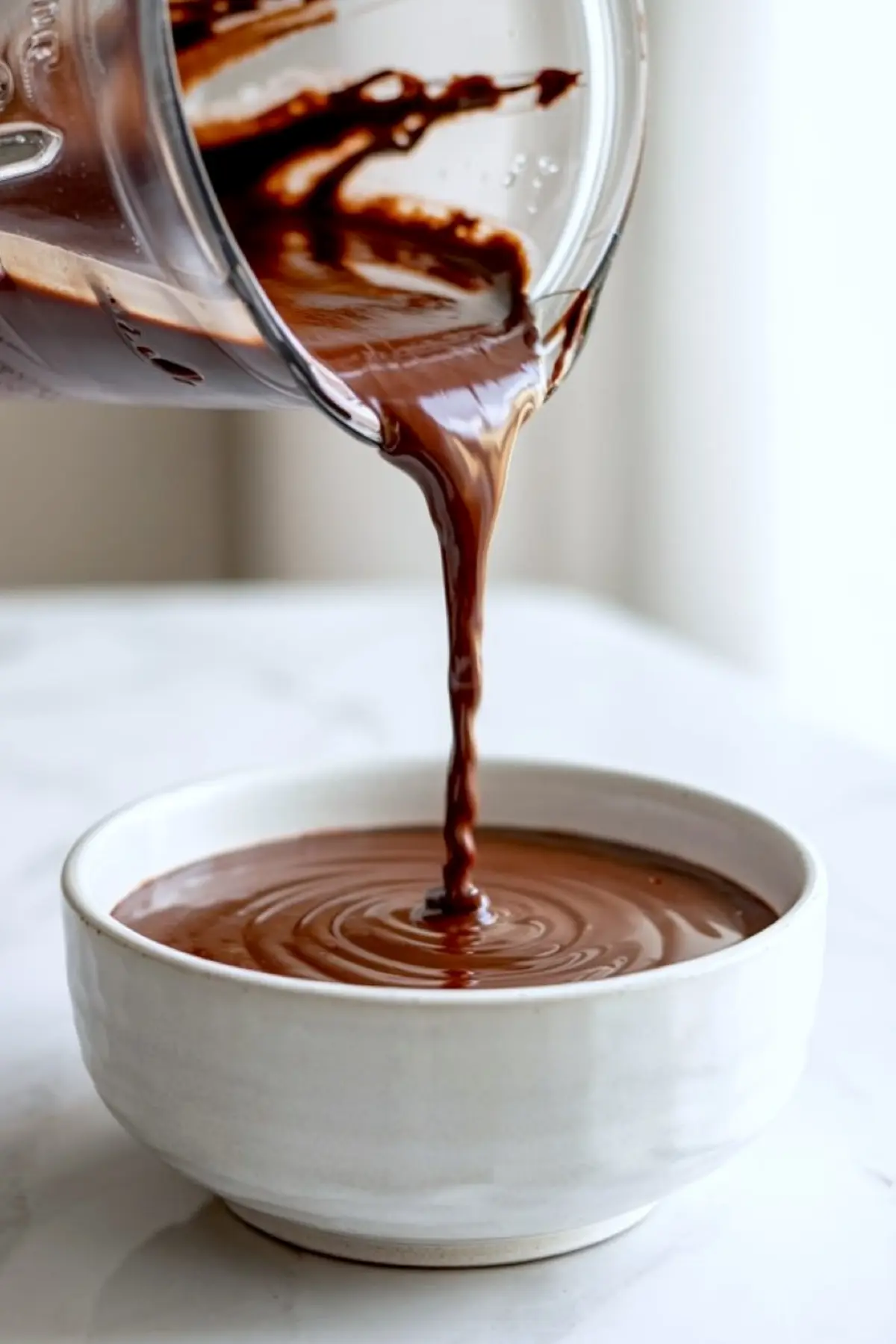
After blending, I spoon the base into a wide bowl and smooth the top. Then I layer toppings that each offer something different: sliced banana for freshness, chopped peanuts for crunch, and chocolate chips for contrast.
A light drizzle of peanut butter adds shine and that extra layer of flavor. Granola works well too if you need more chew.
I treat this part like plating. The goal isn’t to overload, but to balance texture and taste in each bite.
One topping per quadrant works better than everything piled in the middle.
For more seasonal flavor, try it alongside my Pumpkin Pie Smoothie Bowl.
Serving and Storing Tips from Experience
This smoothie bowl needs to be served immediately. It holds well for about 10 minutes but begins to soften quickly.
I chill my bowl in the freezer while blending to help keep everything cold. That’s especially useful on warmer days.
If you want to prep in advance, freeze the smoothie base in a silicone mold. Blend again briefly before serving to bring back the right consistency.
Leftovers don’t store well, but the ingredients do. You can portion out the bananas and dry ingredients into freezer bags and keep the almond milk and peanut butter ready.
The Smoothie Bowl That Feels Like Dessert
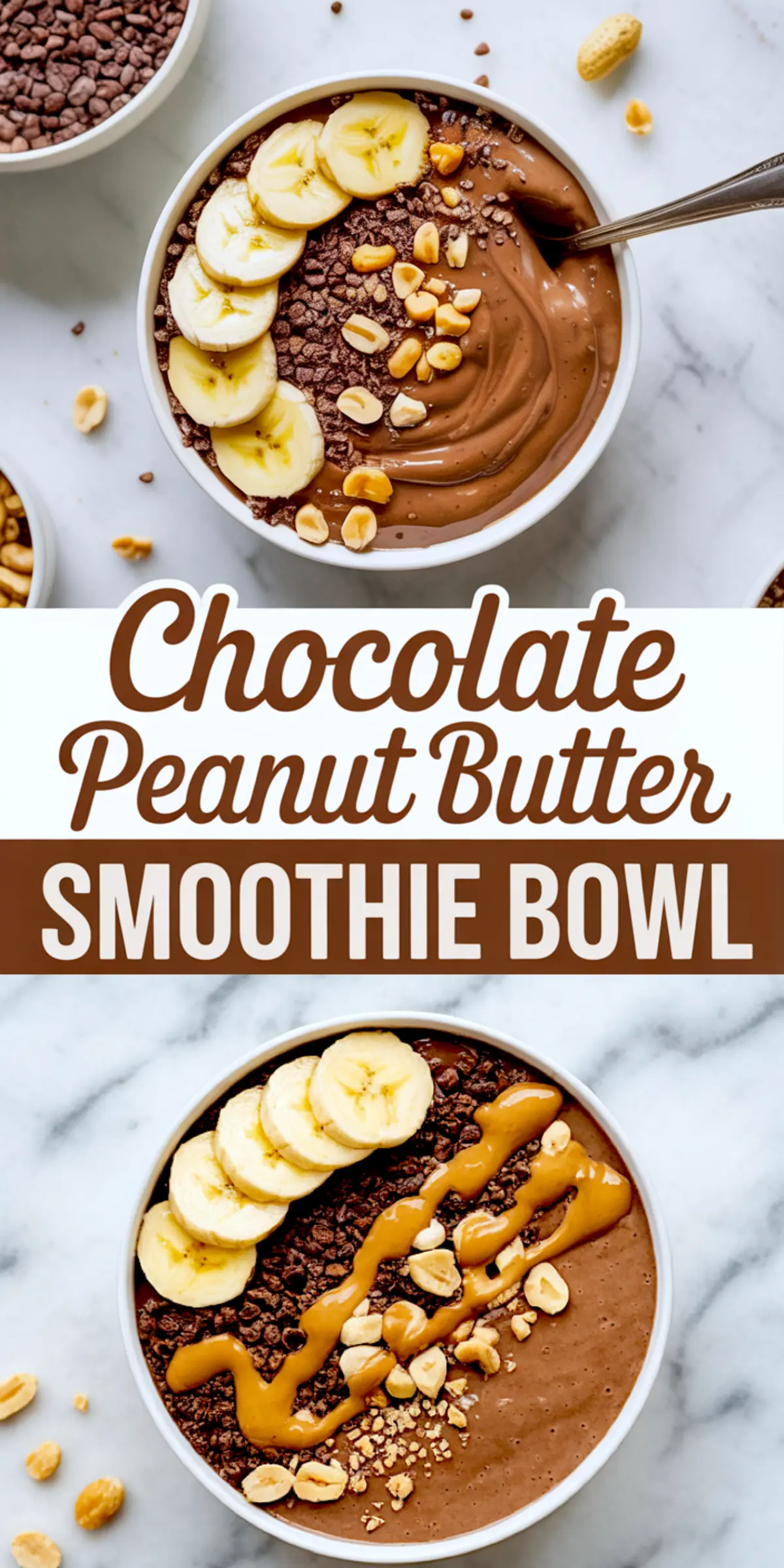
This chocolate peanut butter smoothie bowl lands somewhere between a soft-serve treat and a balanced breakfast. It’s one of those recipes that doesn’t ask for much but gives plenty.
Once you try it, you’ll know what I mean.
If you’ve been burned by thin smoothie bowls or ones that melt by the time you sit down, give this method a try. It’s become my weekday fallback for a reason.
Save this recipe to your Pinterest board so it’s ready when you need a sweet, easy breakfast or afternoon cool-down.
And if you make it, share how it turned out in the comments. Did you add toppings I didn’t? Did you chill your bowl first? I’d love to hear how you made it your own.
Chocolate Peanut Butter Smoothie Bowl
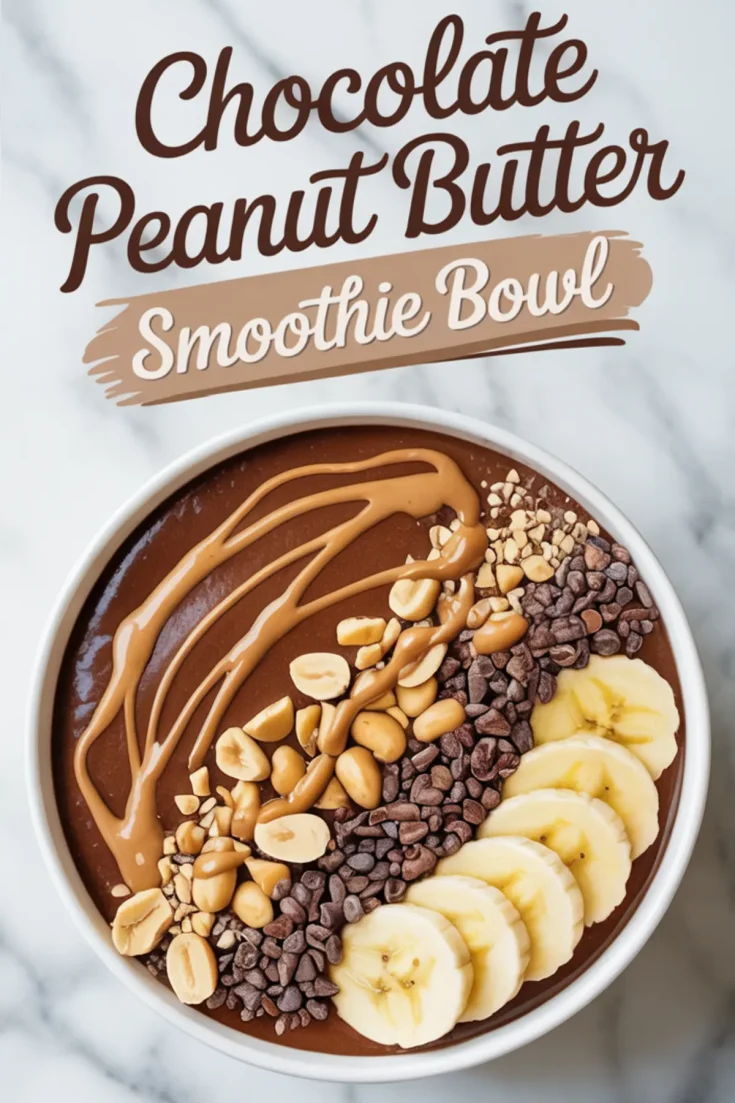
Chocolate peanut butter smoothie bowl tastes like dessert but works for breakfast. I blend frozen bananas with creamy peanut butter and cocoa powder to get that rich chocolate peanut butter smoothie texture. It’s thick enough to pile on toppings and scoop like ice cream. This chocolate smoothie bowl hits the spot when I want something sweet but still packed with protein and fiber. The peanut butter smoothie bowl base is smooth and balanced, and you can add fresh fruit, granola, or even a drizzle of extra peanut butter on top. I keep this one in rotation for breakfast smoothie bowl cravings or easy dessert smoothie nights.
Ingredients
- FOR THE SMOOTHIE BASE
- 2 large frozen bananas
- 2 tablespoons unsweetened cocoa powder
- 2 tablespoons natural peanut butter
- ½ cup unsweetened almond milk
- 1 teaspoon vanilla extract
- Optional: 1 scoop chocolate protein powder
- FOR TOPPINGS
- ½ banana, sliced
- 1 tablespoon chopped peanuts
- 1 tablespoon mini chocolate chips or cacao nibs
- 1 tablespoon granola (optional)
- Drizzle of peanut butter
Instructions
- BLEND THE BASE: In a high-powered blender, combine the frozen bananas, cocoa powder, peanut butter, almond milk, and vanilla extract. Add protein powder if using. Blend on high until the mixture is completely smooth and thick, with a consistency closer to soft-serve than a drink. If the smoothie is too thin, reduce liquid or add more banana.
- SPOON INTO A BOWL: Transfer the thick smoothie into a wide bowl using a spoon or spatula. Use the back of the spoon to create a smooth swirl on the surface.
- ADD TOPPINGS: Arrange the sliced banana, chopped peanuts, chocolate chips or cacao nibs, and granola over the top. Drizzle with peanut butter for added flavor and visual appeal.
- SERVE IMMEDIATELY: Enjoy the smoothie bowl right away while it's thick and cold. Serve with a spoon and eat like soft-serve ice cream.
Notes
Use frozen ripe bananas for the smoothest texture and natural sweetness. To make the bowl nut-free, substitute sunflower seed butter and omit peanuts. Adjust milk type and toppings as desired for dietary preferences.
Nutrition Information
Yield
2Serving Size
1Amount Per Serving Calories 598Total Fat 25gSaturated Fat 6gTrans Fat 0gUnsaturated Fat 16gCholesterol 5mgSodium 259mgCarbohydrates 74gFiber 11gSugar 39gProtein 28g

